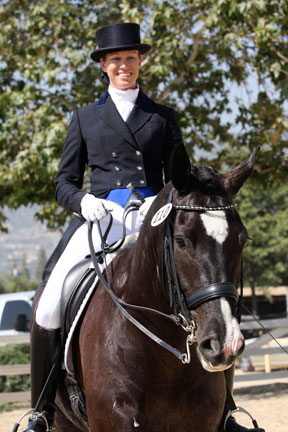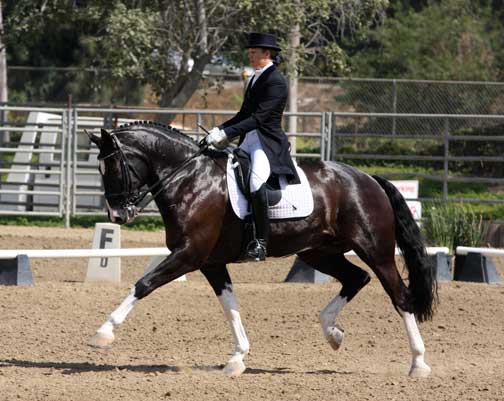Ask the Trainer: Lehua Custer
By Kelly Sanchez April 15, 2011
Lehua Custer’s love of horses began while she was growing up in Hawaii, where she rode Western pleasure, rodeo, jumpers and dressage. After graduating from Pepperdine University with a degree in psychology, she focused solely on dressage and for nearly 10 years was the assistant trainer at Keenridge Farm in Moorpark for two-time Olympian and international judge Hilda Gurney. Under Gurney’s veteran eye, Custer earned her USDF bronze, silver and gold medals. She also participated in the USDF “L” judges program and is currently fulfilling the final requirements to become a licensed “r” dressage judge. In this Ask the Trainer column, Custer tackles dressage questions frequently asked by clients.
How do I know when I’m ready to enter a horse show, and how do I know what class to enter?
Dressage is about the process of training, but competitions can be a nice reward for your hard work. Of course, some people aren’t interested in the pressures and the excitement that go with showing, and that’s fine—there’s so much to enjoy about the sport. But if a client is interested in showing, I tell them they first have to make sure their horse is ready to travel to a new location and that they can safely navigate the facility and the warm-up. You’re ready to show when you can safely execute the required movements of a dressage test.
Start with the Basics
In dressage, any breed of horse is permitted as long as it is sound and healthy
There are shows for every level and budget, from small schooling shows held at local barns to opportunity classes that permit you to enter a class without joining the U.S. Dressage Federation or the U.S. Equestrian Federation. These can be a great way for someone who’s not a dressage rider to see if they like dressage and be seen by a licensed judge. At USEF/USDF-recognized shows, your scores at each level are ranked against those of everyone else in the country.
Before you enter a show, it’s essential to know the protocol—what fees need to be paid, what organizations you need to join, when you should arrive, how to check in, how to enter the dressage arena. You should know whether you’re allowed to enter the arena prior to the whistle, what the whistle means and what to do if something goes wrong. Questions like these can be answered by a knowledgeable coach or found in the USEF Rule Book (www.usef.org), which also explains the requirements for entering and competing in a horse show. Show organizers are generally quite helpful, and there is also a technical delegate on hand at all times at shows to help with rule or equipment questions.

Audit a few shows to get a feel for the process, pace and feel of a show. Get a sense of the layout of the show grounds and the flow of going from your trailer to the warm-up and into the show ring. Figure out how much time you’ll need to get ready. Watch what riders at your level or division are doing. Bring a pad and take notes.
You can also obtain Introductory Level tests from the USDF and Training through Fourth Level tests from the USEF. Dressage tests have a section called “directives” that explain what is required at each level, and they can help you determine what level is right for you. You can find these online, at www.usdf.org. There is also a wonderful explanation for each of the movements performed in dressage tests in the dressage section of the USEF Rule Book. Having a trainer to guide you through the decision process is very helpful.
It’s best to enter a show one level below what you’re schooling at home. Horses and riders tend to be weakest under pressure with the newest thing learned. For example, if canter-to-walk transitions are inconsistent at home, then you aren’t quite ready to show Second Level.
I always recommend to clients that they arrange for a coach or helper with experience to accompany you to the show.
More than Ribbons
Showing is a way to mark your progress and gain knowledge from a trained—and objective—professional who sees many people across the country showing at your same level.
Going to shows is also a way to connect with the horse community and people with similar interests as well as to see what other horses and riders are working on. Horse shows can be challenging, but they can also be educational and inspiring.
Show seasons generally end in a championship, which can be a nice reward for the progress you’ve made in your training. For riders in California, there are Regional Adult Amateur Championships, Dressage Association of Southern California (DASC) championships and California Dressage Society (CDS) championships.
Showing might not be for you. Many people spend their time training at home and educating themselves about dressage by auditing clinics and attending educational seminars and forums.
Lehua Custer now trains new and experienced riders at the Los Angeles Equestrian Center with Barbara Parkening. She can be reached at lehuacuster@gmail.com.
Short URL: https://theequestriannews.com/?p=450


